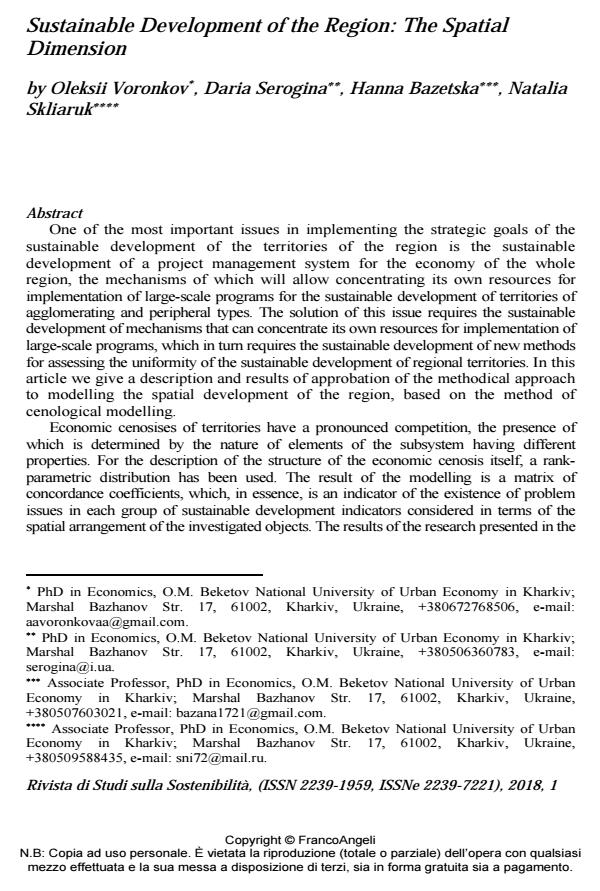Sustainable Development of the Region: The Spatial Dimension
Journal title RIVISTA DI STUDI SULLA SOSTENIBILITA'
Author/s Oleksii Voronkov, Daria Serogina, Hanna Bazetska, Natalia Skliaruk
Publishing Year 2018 Issue 2018/1
Language English Pages 14 P. 11-24 File size 315 KB
DOI 10.3280/RISS2018-001003
DOI is like a bar code for intellectual property: to have more infomation
click here
Below, you can see the article first page
If you want to buy this article in PDF format, you can do it, following the instructions to buy download credits

FrancoAngeli is member of Publishers International Linking Association, Inc (PILA), a not-for-profit association which run the CrossRef service enabling links to and from online scholarly content.
One of the most important issues in implementing the strategic goals of the sustainable development of the territories of the region is the sustainable development of a project management system for the economy of the whole region, the mechanisms of which will allow concentrating its own resources for implementation of large-scale programs for the sustainable development of territories of agglomerating and peripheral types. The solution of this issue requires the sustainable development of mechanisms that can concentrate its own resources for implementation of large-scale programs, which in turn requires the sustainable development of new methods for assessing the uniformity of the sustainable development of regional territories. In this article we give a description and results of approbation of the methodical approach to modelling the spatial development of the region, based on the method of cenological modelling. Economic cenosises of territories have a pronounced competition, the presence of which is determined by the nature of elements of the subsystem having different properties. For the description of the structure of the economic cenosis itself, a rank-parametric distribution has been used. The result of the modelling is a matrix of concordance coefficients, which, in essence, is an indicator of the existence of problem issues in each group of sustainable development indicators considered in terms of the spatial arrangement of the investigated objects. The results of the research presented in the paper allow us to conclude that it is expedient to use the developed method to evaluate the spatial development of the regions.
Keywords: Region, spatial development, economic cenosis, cenologic modelling.
Oleksii Voronkov, Daria Serogina, Hanna Bazetska, Natalia Skliaruk, Sustainable Development of the Region: The Spatial Dimension in "RIVISTA DI STUDI SULLA SOSTENIBILITA'" 1/2018, pp 11-24, DOI: 10.3280/RISS2018-001003